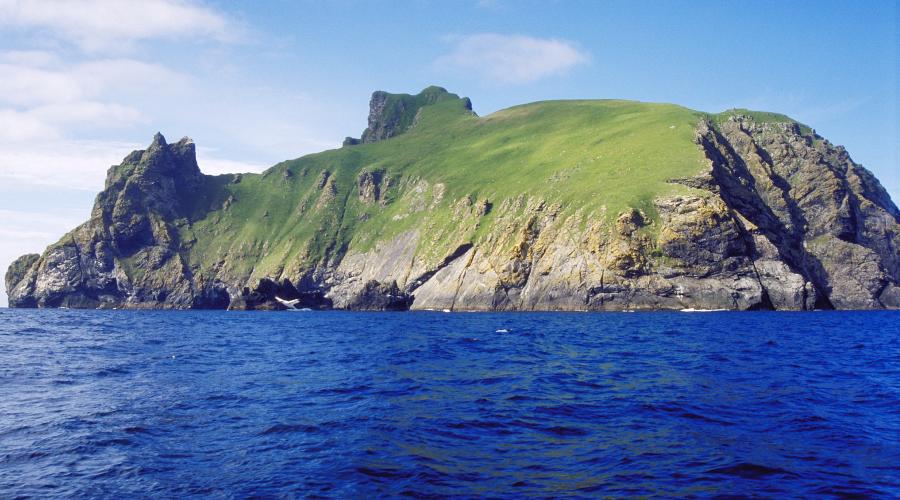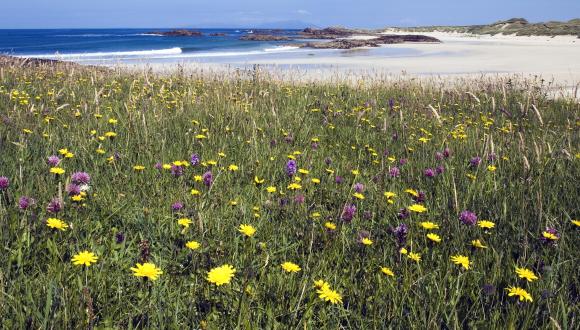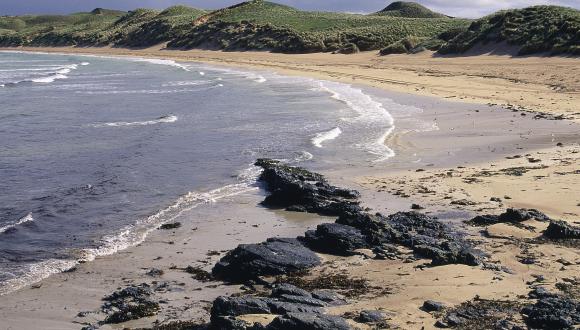
Coastal cliffs
Scotland’s coasts support a wide range of superb cliff habitats, which are home to seabirds and maritime heath and grassland.
Our coastline has a complex geology, and the sea has carved out softer rocks and lines of weakness to produce a spectacularly varied landscape.
Scottish coastal cliff habitats include:
- St Kilda’s wave-battered cliffs – which are honeycombed with caves and tunnels
- sheltered slopes along the Fife coastline – despite being sheltered, these are at risk from coastal erosion as they comprise soft rock
- ‘fossil’ cliffs – where raised beaches now separate old cliffs from the sea, sometimes by large distances
Scottish cliffs in clay and other soft deposits usually overlie bedrock. This protects them from much of the rapid erosion seen in true soft cliffs such as those of north Norfolk.
An extreme landscape
Structural features of sea cliffs include:
- caves
- overhangs
- natural arches and bridges
- flying buttresses
- cliff-top blowholes
The most imposing cliff-top blowhole in Scotland is on the island of Stroma in the Pentland Firth.
Scotland’s most important cliffs are those in:
- the Outer Hebrides
- Orkney
- Shetland
- Grampian
- Galloway
- the northern mainland – from Wester Ross to the Moray Firth’s southern side
Since ‘cliff’ has no agreed definition, estimates of the total length of Scotland’s cliffs vary, from 1,778km to 4,060km. This latter figure represents some 60% of Britain’s cliffs.
Our highest:
- sea cliffs are at Conachair on St Kilda – they reach 426m
- mainland cliffs are at Clo Mor, near Cape Wrath
- sea stack is Stac an Armin on St Kilda – at 196.3m, it’s also the UK’s highest sea stack
Life on the edge
Seabirds can find a nesting ledge on most types of rock. Horizontally bedded rocks such as sandstone are particularly suitable.
Grazing animals can reach most cliff vegetation. But those ledges they can’t reach possibly provide the habitat least altered by human activity in the UK.
Cliffs on exposed coasts feature unusual vegetation types that like the salt spray. These include the maritime heaths and grasslands of northern Scotland, where spring squill and Scottish primrose thrive.
‘Perched’ saltmarsh forms high above tidal limits in northern areas that get a great deal of sea spray. And on parts of Hirta, St Kilda, extreme sea spray and heavy grazing combine to support vegetation rich in plantains.
In contrast, some cliffs in south-west Scotland may be so sheltered that they support woodland just above the high water mark. South-facing cliffs may have a warmer microclimate, giving southern species a northern toehold.





